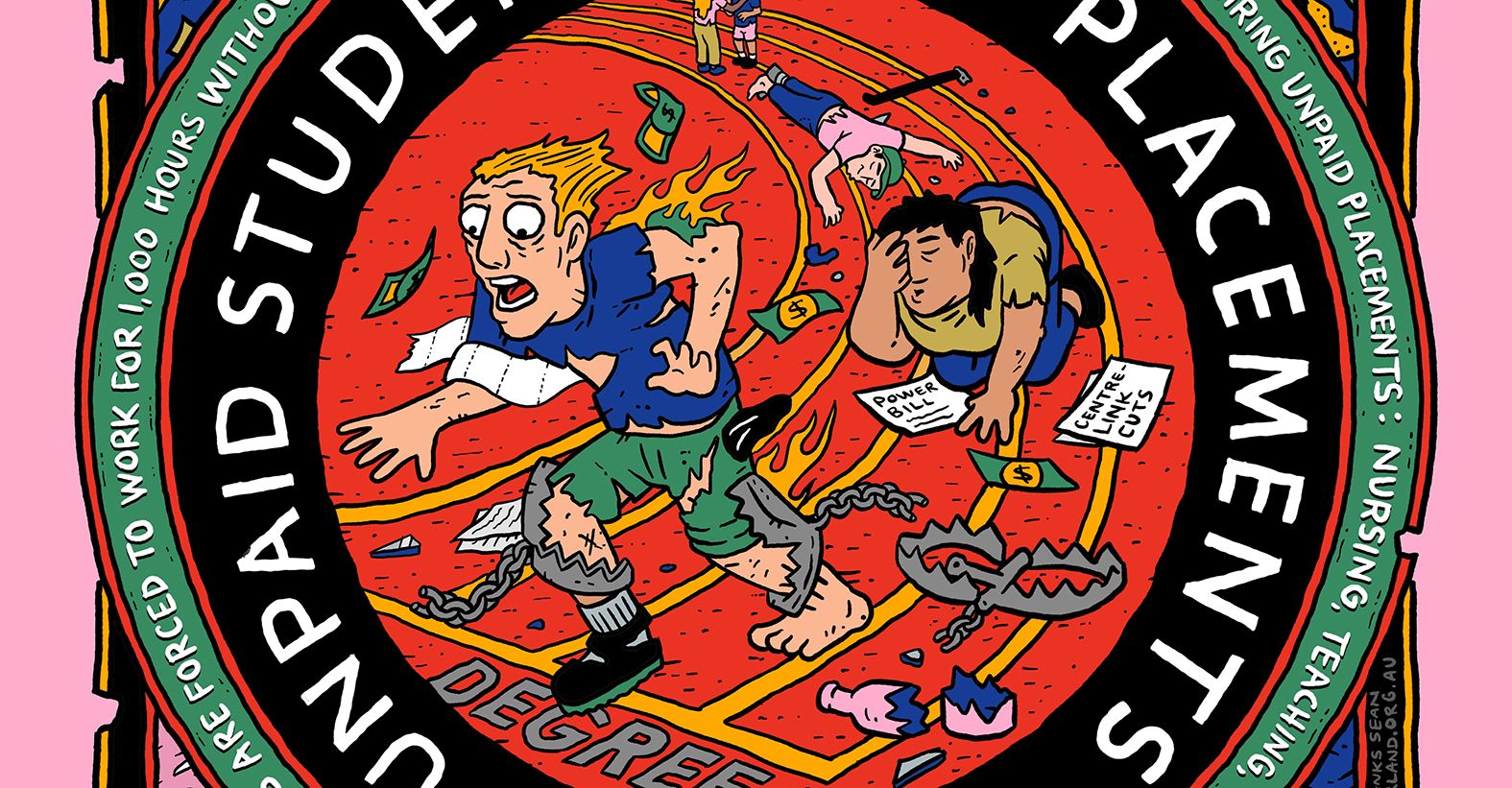The neologism ‘kafkaesque’ is misfired with such frequency that it has perhaps – ironically – become a non-sequitur unto itself. Kafka biographer Frederick Karl detailed a criteria for the dubbing of something as ‘kafkaesque’ in a 1991 article for the New York Times:
[Kafkaesque] is when you enter a surreal world in which all your control patterns, all your plans, the whole way in which you have configured your own behavior, begins to fall to pieces, when you find yourself against a force that does not lend itself to the way you perceive the world. What you do is struggle against this with all of your equipment, with whatever you have. But of course you don’t stand a chance. That’s Kafkaesque.
Enter the world of ALAN (Assessment for Literacy and Numeracy). ALAN is a world in which engaging lesson planning and the configuration of effective classroom practice begins to breakdown against a bureaucratic force so out-of-touch and unwilling to listen to teachers that the very purpose of education is superseded by the collection of data. It’s as Kafkaesque as much as it is a questionable use of taxpayer dollars.
The government’s thirst for big data descended on Early Action for Success (EAfS) schools in the form of ALAN in Term 1 this year. The NSW Department of Education use the EAfS framework to initiate the roll out – a program designed to help children with the highest levels of identified need – what is essentially a comprehensive clerical experiment thinly veiled as pedagogy.
Teachers have struggled against ALAN and its surreal beta world of micro-auditing in which all of a teacher’s best practice is taken apart by bureaucratic forces – and the government and governing bodies are finally starting to listen.
ALAN’s rollout has been abruptly cut short after mounting pressure from the NSW Teachers’ Federation and the results of a teacher workload survey were communicated to Education Minister Rob Stokes.
In the research project commissioned by the NSW Teachers’ Federation and conducted by the University of Sydney, it was revealed 96.4 per cent of the 18,000 surveyed teachers experienced a significant increase in labour related to the collection, analysis and reporting of data. The general consensus of the survey pointed at increased administrative duties being the main culprit behind the impoverishment of teachers’ productivity time as they scramble to adequately plan and meet data entry requirements.
In a memorandum to principals, the deputy secretaries of the NSW Department of Education, Georgina Harrison and Murat Dizdar, have outlined new options for schools and ALAN. In the memorandum, the deputy secretaries explicitly state that – effective immediately – all data entry and collection requirements for PLAN2/ALAN in Term 2 have been removed.
Federation has successfully argued that the implementation of ALAN has created excessive workload and extra stress for teachers as they attempt to navigate the program in its beta stages and use it as a ‘tool for assessment’.
The memorandum has significant implications for the remainder of the school year. Data for only 5–10 students in Kindergarten, Year 1 and Year 2 classes will be required to be entered into ALAN in Terms 3 and 4.
The serious downgrading of ALAN will come as a sigh of relief to teachers who have been coerced into participating in the micro-auditing system since the start of 2018. ALAN is comprised of a series of questionnaires in which a teacher must input data for each student according to over 1000 different elements and sub-elements. It equates to almost 60 A4 pages of eye-destroying spreadsheets for every student every five weeks.
It is worth noting the sudden cut to ALAN’s rollout comes a week after the embattled platform’s training videos were removed from YouTube. Following a complaint from a primary school teacher in Western Sydney, it was discovered that one of the videos published publicly broadcast a student’s full name and student number.
Up until the secretaries’ memorandum, teachers were expected to write reports and complete ALAN data entry requirements at the same time in Term 2. Some teachers have even reported going back to casual work or seeking other employment as they steer away from the all-consuming workload – a workload that includes producing 15,000 words worth of reports, navigating ALAN, and continuing to plan and teach lessons as well as take care of student wellbeing.
Sadly, it would seem the DoE is hoping the change will fly under the radar as schools are yet to amend their implementation plans. A number of primary schools in Western Sydney, which make up 14% of ALAN’s rollout, have reported that despite the cuts to the data entry requirements, nothing has changed and are still expected to complete the monumental series of micro-tasks.
In my own experience, the job of a primary school teacher in NSW has become too much for too little, borderline untenable. Two distinct beyond-fulltime jobs have emerged: that of classroom teacher and that of professional statistician. One person cannot sanely be both.
To add to the head-spinning workload and pile of bureaucratic measures, teachers in EAfS schools are also required to attend fortnightly ‘professional learning’ sessions offsite during class time. This training comes with no incentive for teachers and is expected to be completed on top of their already burgeoning workload. Known as ‘L3’ (Language, Learning, Literacy), the course includes ‘homework assignments’ comprised of dense academic readings published in the 1990s in the UK and USA and ‘in-between assignments’ that mostly include eliciting data from the children in our class. When asked why we aren’t looking to more recent research the reasoning fell into the eye-rolling realm of ‘but it’s still relevant today’.
When I tried to withdraw from the course I was told by superiors that I would have to ‘put up with the bureaucracy’ if I wanted to ‘remain in the profession’. I attempted to withdraw from the course after it was repeatedly suggested by the lecturer that we should spend a portion of our wages on furniture and resources for our classrooms. The room of teachers at L3 hailed from various primary schools in south-western Sydney. We were regaled with anecdotal tales of getting down to Ikea on a Sunday morning before it opened to pick up some tables. In a session supposedly designed to examine ‘rich texts’ we were encouraged to purchase books for our respective class from Book Depository, eBay or Amazon. Needless to say I’m sure any fair person doesn’t perceive a public school teacher spending half of a day every fortnight away from their class to hear commercials for Amazon and Ikea as at all beneficial to their practice or outcomes for the children.
Nor do I think teachers should be spending any of their wages on resources in a publicly funded school. I can barely afford to cover my rent on a teacher’s wage in Sydney let alone get down to Ikea in my spare time to purchase furniture. This culture of teachers being expected to buy resources extends its salty classist tentacles further into teachers’ pockets as NESA requires post-2004 teachers to pay an annual compulsory fee of $100 to have their job. Post-2004 teachers are not allowed to teach unless they pay the fee. NESA’s reasoning? The fee contributes to providing cutting-edge professional learning. Talk about ‘ironic weight’. Considering there are over 80,000 teachers just in NSW alone, that is a lot of money being funneled into pulling teachers off class to be shown a PowerPoint Presentation of teaching tools available on eBay and how such tools relate to a pedagogy research paper published in 1998.
Public schools rely on the unpaid overtime labour and emotional blackmail of teachers. I’ve lost count of the amount of times I’ve challenged why we are expected to complete an arbitrary task in our own time only to be told ‘we don’t get into teaching for the money’ and ‘we go that step further because it’s what is best for the children’. Last year I refused, for the last time, to print out my class reports to be edited by a superior. The reports amounted to a whopping 15,000 words in total and it was expected that I would print them all out for a supervisor to comb through, making handwritten editorial feedback that I would then need to re-enter electronically and print off again. The results was hours of unpaid labour outside of the 37 hours award for which I’m paid. This example of double-entry and wasted resources echoes through nearly every facet of administrative duties as a teacher.
So while the cuts to data entry requirements are welcome there is still a long way to go. ALAN was essentially an extension of the same thinking which informed NAPLAN and My School. At the EduTECH conference in Sydney earlier this month, former prime minister, Julia Gillard, defended her government’s introduction of NAPLAN and My School.
‘The nightmare scenario painted at the time I delivered that reform, of league tables and name and shame, has simply not come true, and I was very confident it would never come true,’ Gillard said.
My experience begs to differ. Big data and standardised results provide supposed ‘evidence of success’ for careerists and bureaucratic powerbrokers in public education. This starts with Instructional Leaders and goes all the way to the top. I’ve witnessed these ‘results’ wielded and manipulated by those who wish to ascend the public school hierarchy. I’ve lost count of the number of the hours and days lost to analysing NAPLAN test results in comparison to other schools in the area. Teacher attrition is at an all-time high and yet we are constantly harangued to tow the line when it comes to bureaucratic policy and administrative duties: all in the name of shining the schools reputation under the pretense that the extra labour is ‘what is best for the children’ – even if that means spending your spare time down at a Ikea buying a desk or on Amazon.com buying books. For me this was all while on a succession of temporary contracts. From year-to-year or term-to-term there was no employment security yet I was expected to go to the same level of ‘above and beyond’ as my permanently positioned colleagues. In 2017 the Australian Bureau of Statistics reported 53% of people with education qualifications no longer work in education.
It is unclear at this stage what direction the government and the Department of Education will take in respect to ALAN or assessment more widely beyond 2018. If history is anything to go on, governments of the time have made habit of spending a questionable amount of resources on hoarding policies, micro management, and rebranding departments. The hope is the cycle of putting students and teachers on trial in the form of ill-informed projects such as NAPLAN and ALAN will cease. Less ticking boxes for the sake of ticking boxes and more listening to teachers is crucial if any government is serious about progressing real education outcomes.
Image: Yannic Meyer / flickr






